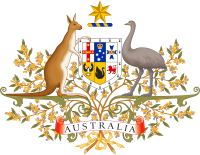Vuong Nguyen Hong Phuc Review of Australian Parliament
Parliament House is the heart of Australian democr...
Parliament House is the heart of Australian democracy. This is one of the rare Parliament buildings in the world open to the public.
The design of the building belonged to a New York-based architectural firm called Mitchell / Giurgola & Thorp, which was selected from more than 320 blueprints from around the world. Unlike the Parliament buildings in many other countries that are designed to show power or show national political trends, the Australian Parliament building is designed to be open to many of the country's natural features. Instead of residing on a high hilltop, which would feel imposing on the people, the building was built at the bottom of the hill, on flat land, showing a welcoming and intimacy. the people of the government.
The front yard of the building is 196 m2 wide by artist Michael Nelson Jagamara designed and decorated according to mosaic art. Michael shared the meaning of the mosaic on the yard is a reflection of the dreams and dreams of the Australian people and the Australian government. It is also the duty of the government, always putting the interests of the country first and realizing the dreams of the people.
The Great Lobby was considered the face of the building. This is a space that welcomes tourists to visit. At the same time, whenever there is an event held in the front yard, the lobby is the backstage, where the cameras are always facing. Because of that important role, the Great Hall was decorated with luxurious materials. Part of the sidewalk outside the entrance is paved with red Christmas Bush granite, transported from Oberon. The facade wall is paved with Italian Paradise White Carrara marble.
Going inside is the Lobby completely decorated with marble, so it is also called the Marble Lobby. There are 48 columns of blue and pink marble, representing the color of the land plants in Australia. These are also the two typical colors of the two House of Representatives and the Australian Senate meeting room. Part of the green stone is the Italian Cipollino marble, while the pink stone is the Atlantide Rosa marble of Portugal. The floor below is decorated with spheres, hemispheres, triangles and paved with Paradise White marble and Belgian black granite. The special thing about these granite slabs is that inside them are filled with fossils of marine plankton dating back about 345 years such as: corals, moths, lilies, etc. and they are completely visible. visible to the naked eye. The wall is paved by 20 pieces of mosaic wood with many decorative motifs imitating the country's iconic plants. The two staircases are also paved with marble shaped on the shape of Australian tree seeds by sculptor Anne Ferguson.
Up to the Great Hall is the place where solemn welcoming, banquet or national events take place. The entire hall space is paved with many types of precious woods such as birch, brushbox, eucalyptus, ebony. In addition to typical Australian woods, in which, ebony is a gift from Papua New Guinea. There is also one of the largest tapestries in the world with an area of 20x9 meters, depicting the scenery of the eucalyptus forest by Australian artist Arthur Boyd.
In addition, inside the National Assembly building, there are also the meeting rooms of the Senate and the House of Representatives, the Lounge and a gallery of excellent art works. In addition, if you are interested, you can sit in a specially designed room to watch the Australian politicians' questioning.
Yeudulich.com

Comments: